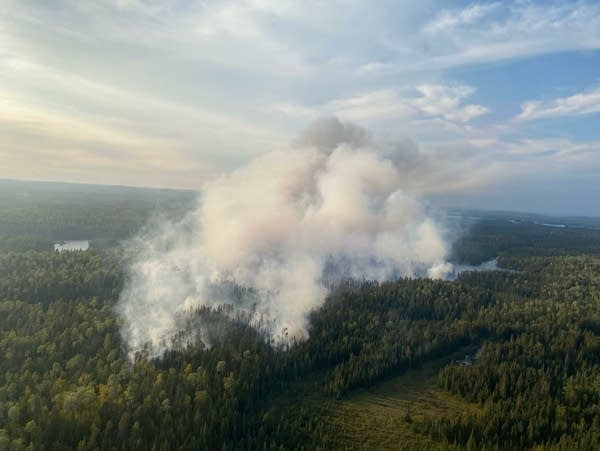MPCA forecasts less severe air pollution from ozone, smoke this summer

Go Deeper.
Create an account or log in to save stories.
Like this?
Thanks for liking this story! We have added it to a list of your favorite stories.
State forecasters say Minnesota likely won't see a repeat of the record-setting unhealthy air that settled over the state for much of last summer, mostly due to smoke from Canadian wildfires.
Minnesota Pollution Control Agency meteorologists unveiled their forecast for this summer’s air quality during a virtual news conference on Tuesday.
They say they don’t expect anything near last year, when the state experienced a unheard-of number of air quality alerts for unhealthy conditions.

“2021 was historic, to put it in one word,” said MPCA meteorologist Matt Taraldsen. “It wasn't just a lot of events we had to forecast for, but the severity and the duration and the scope was really unprecedented.”
Support Local News
When breaking news happens, MPR News provides the context you need. Help us meet the significant demands of these newsgathering efforts.
In contrast, they anticipate that this summer Minnesota may experience three to five days when ozone could reach the orange level, where it’s considered unhealthy for sensitive groups. That’s compared to a normal year of two to four days.
However, Canadian wildfires could affect air quality in Minnesota, although likely not as severely as last summer, said Nick Witcraft, MPCA meteorologist.
“It looks like there may be an above-normal [wildfire] season in Canada, which means we'll probably see a few days with impactful smoke – hopefully not as impactful as last season,” Witcraft said. “But we could expect a few days with smoke.”
Conditions that are more likely to create unhealthy air quality include hot and sunny weather, drought that sparks wildfires and winter months when high-pressure air systems trap pollutants, Witcraft said.

Drought conditions in Minnesota have improved, although some abnormally dry areas remaining in northern and southern Minnesota, he said. He continued the wet spring in northern Minnesota should help ease the fire danger there somewhat.
However, the western United States and parts of Canada remain very dry,
“With the dryness in the western U.S., we will see smoke make it over Minnesota, but that smoke tends to stay aloft. It doesn't make it to the ground that much,” Witcraft said. “So we'll see a lot of days with pretty sunsets.”
The MPCA maintains the Air Quality Index, which measures the level of pollutants in the air and what impact they have on human health. Alerts are issued when the pollutants reach levels that are considered unhealthy for certain groups, or the general population.
Those at highest risk from unhealthy air include people with chronic lung diseases or cardiovascular conditions, including asthma, COPD, heart disease and high blood pressure.
Children and older adults are also more sensitive to unhealthy air quality, as are people doing extended physical activity outdoors.


